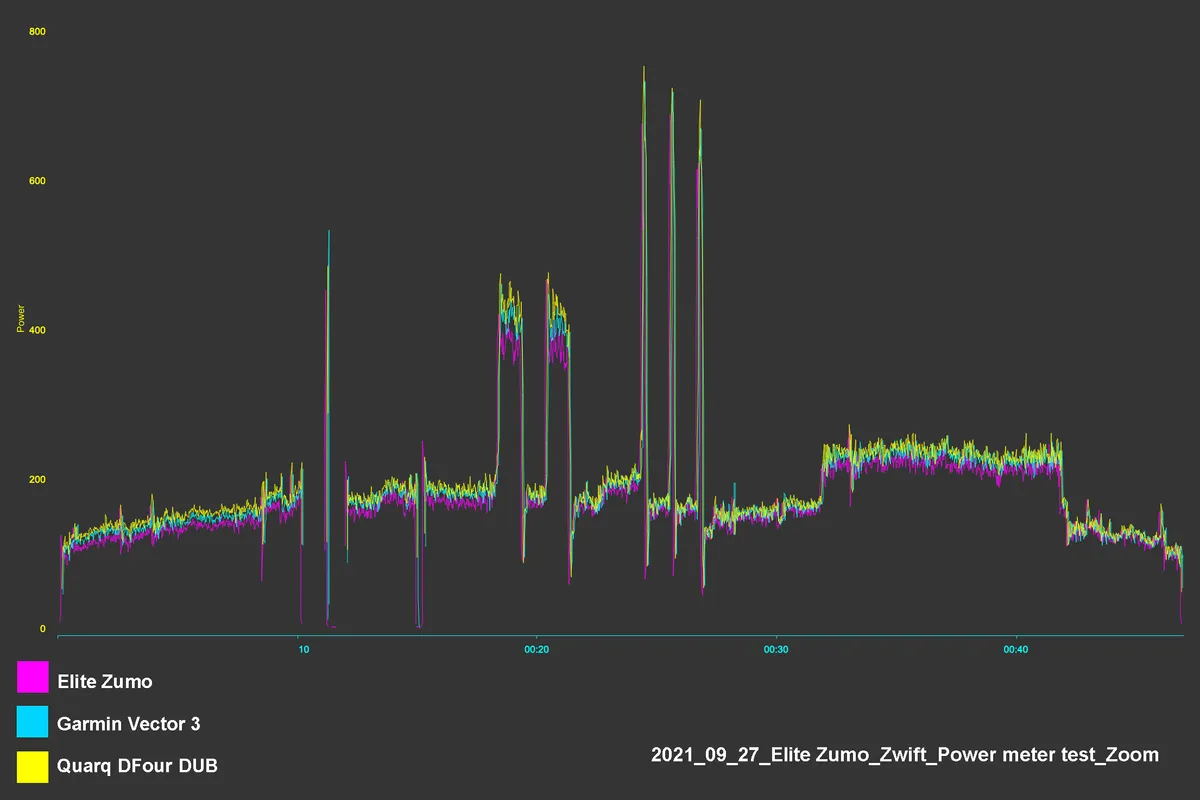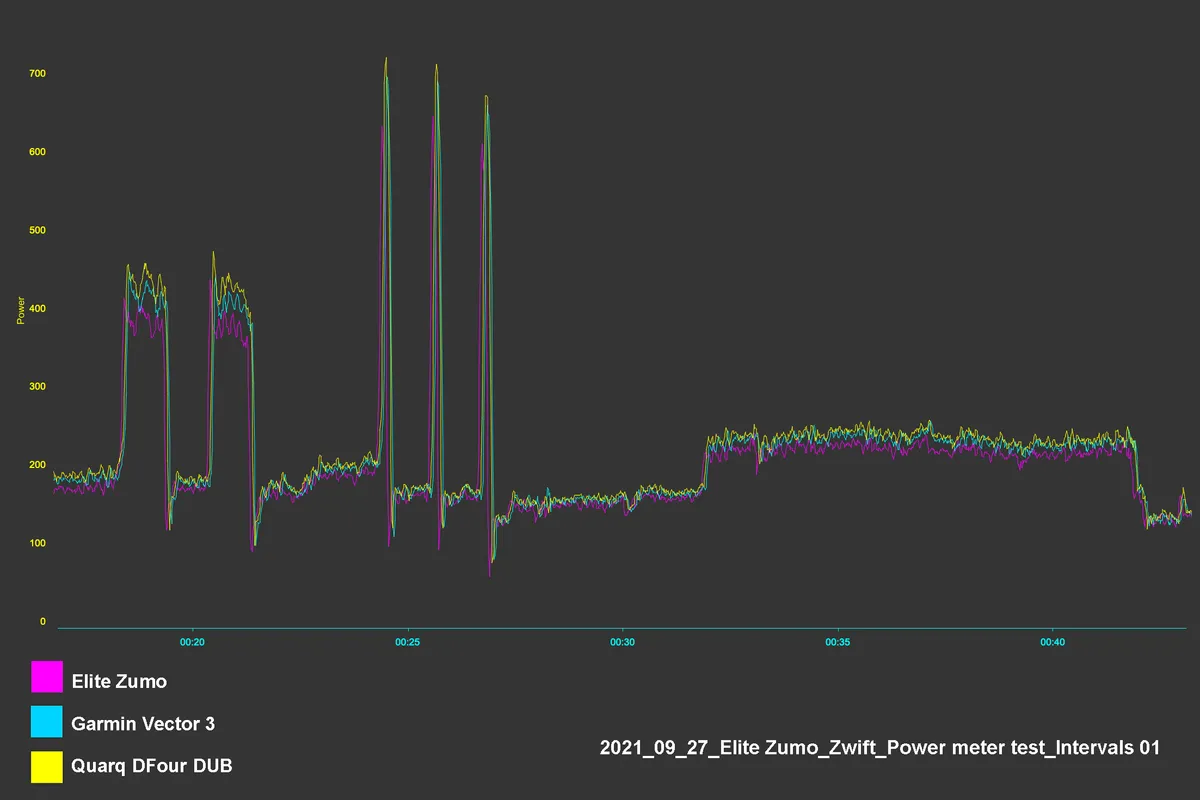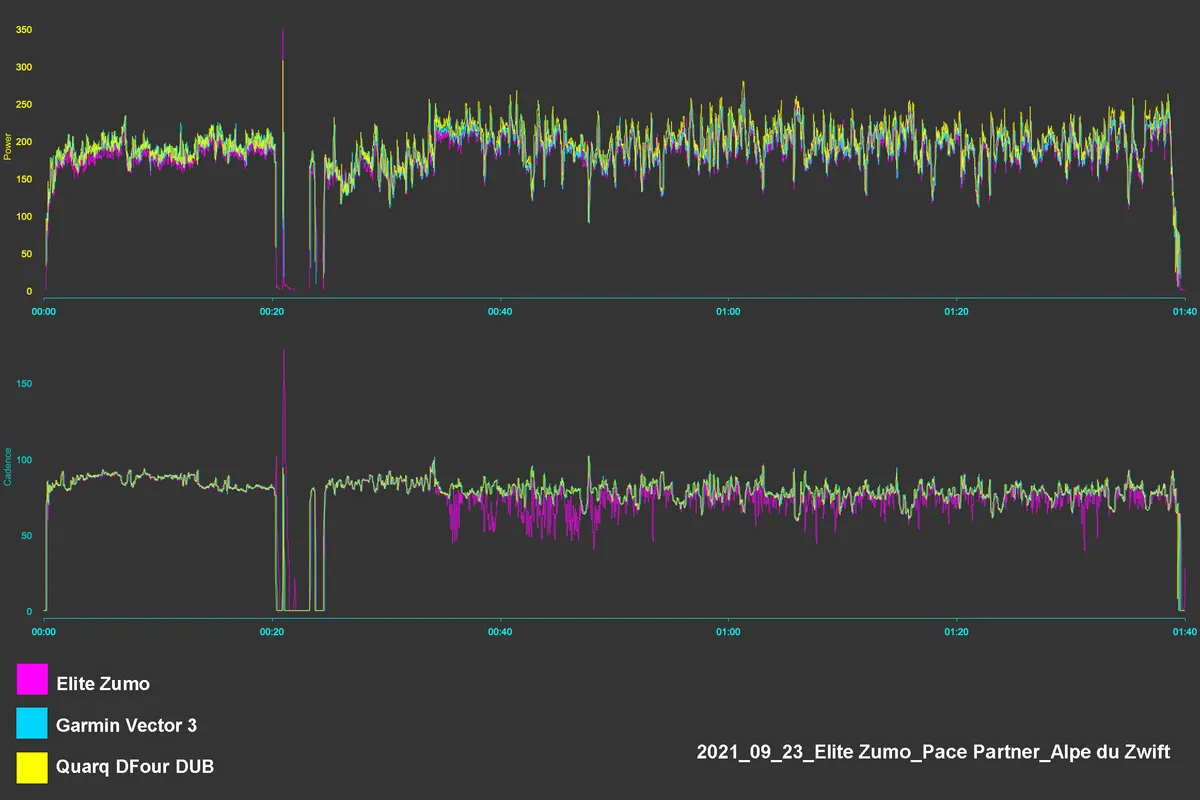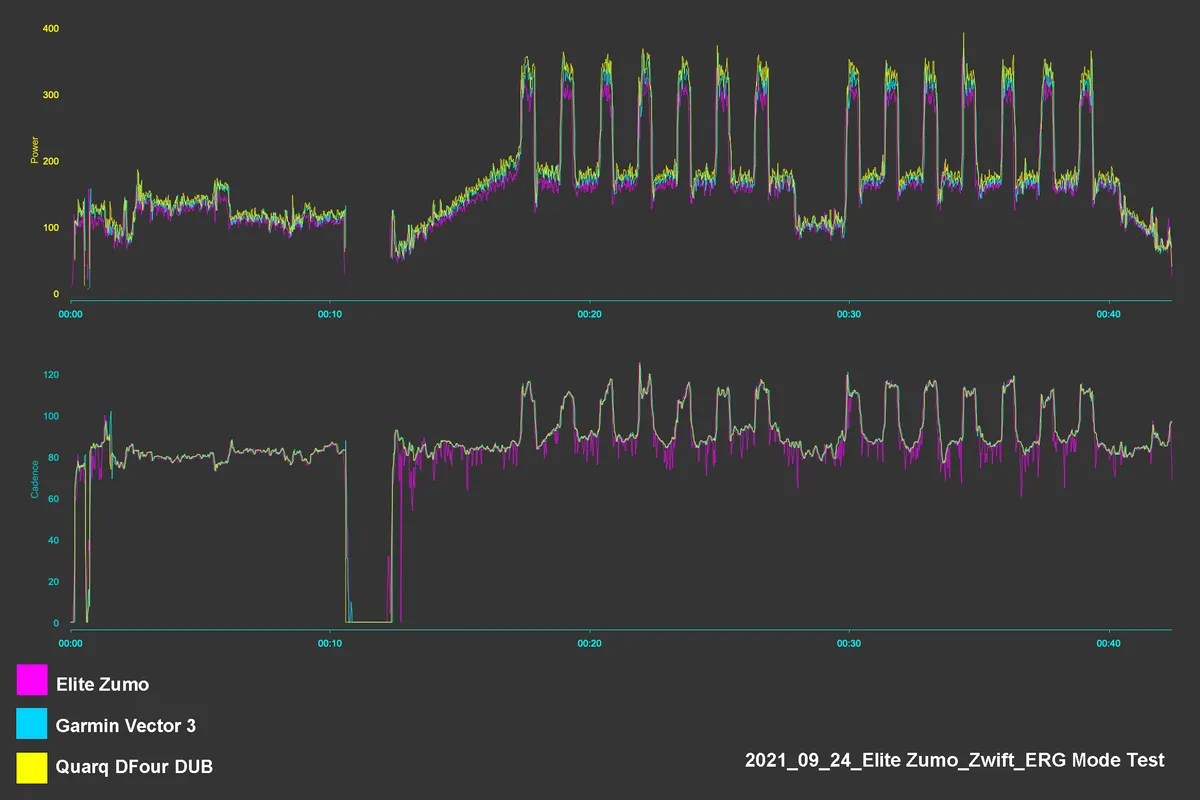The Elite Zumo is a direct-drive smart trainer aimed at the budget end of the market. In fact, it’s one of the cheapest direct-drive smart trainers available from an established brand.
On paper, its spec is less ambitious than some of its competitors, but Elite has smartly compromised on things that most cyclists shopping in this price range won’t miss.
The Zumo doesn’t offer the flawless data accuracy of more expensive smart trainers, but it’s nevertheless good enough to make it a dependable, easy to live with option for those without ambitions to train and race at the highest (virtual) levels.
Elite Zumo set up
The Zumo comes almost entirely assembled, with the exception of the three support legs. These simply need to be bolted in place using the two included Allen keys.
Unlike its pricier siblings, the Elite Suito and Elite Direto XR, the Zumo doesn’t come with a cassette, so you’ll need to supply your own.
As standard, the Zumo ships with a Shimano / SRAM 8- to 11-speed compatible freehub. Options for SRAM XDR / XD 12-speed, Campagnolo 8- to 12-speed and Shimano Microspline, can all be purchased separately, if required.

The Zumo is quite a large unit, especially in terms of height, but the legs do at least fold in for storage.
With its integrated handle and 13.08kg weight (without cassette or axle adaptors), it’s also not too difficult to move around, should you not have a dedicated space to leave it set up permanently.
Once the legs and a cassette are attached, all that’s left to do is install the required axle adaptors for your bike (adaptors for both 142/148mm thru-axles and 130mm/135mm quick-release skewers are included) and plug it in.
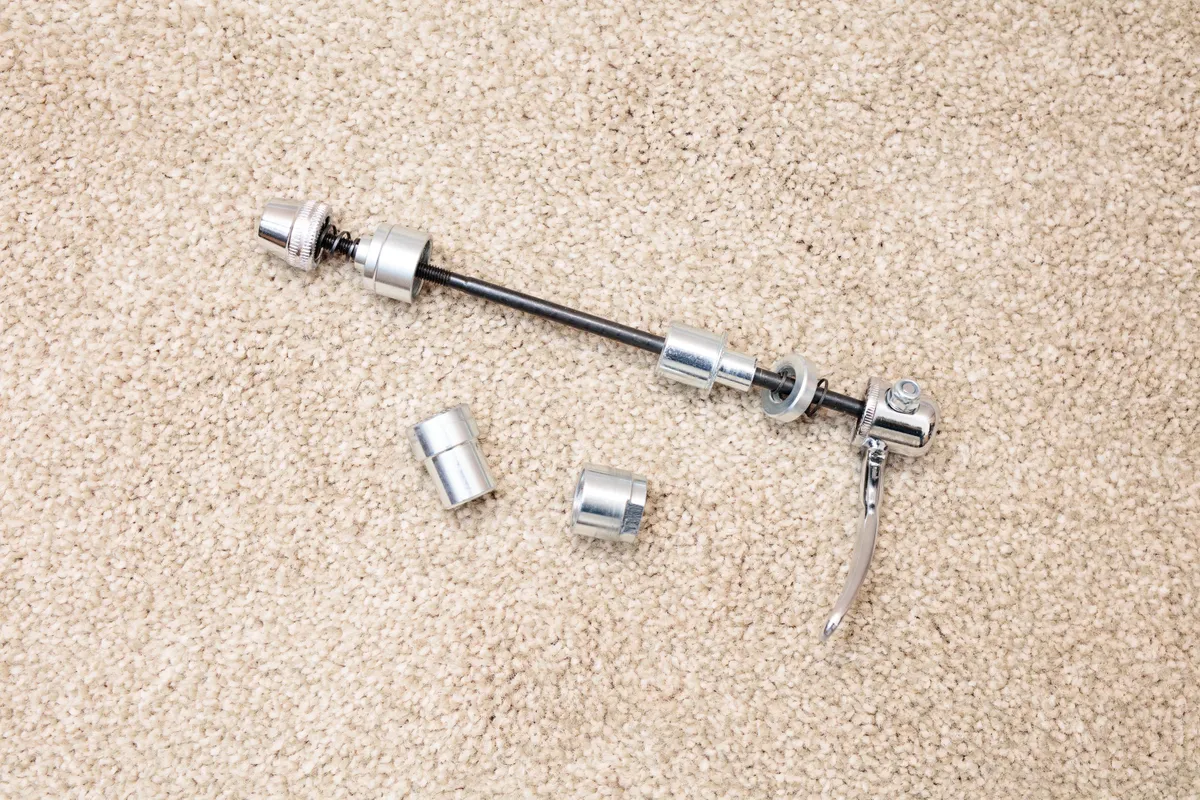
In Europe, Elite offers a two-year warranty on its smart trainers. This can vary in other countries, though, so it’s worth double-checking with your retailer of choice.
Elite Zumo performance
Connectivity
Like most smart trainers, the Elite Zumo can transmit data over both ANT+ and Bluetooth.
Connecting to Zwift and Garmin Edge cycle computers was quick and painless, and I didn’t experience any data dropouts during testing.
Unlike the similarly priced ThinkRider X5 Neo Smart, the Zumo does transmit cadence as well as power data. The accuracy of the cadence data isn’t always perfect, but it’s correct enough of the time to still be useful (more on this later).
It’s possible to perform a spin-down zero-offset (calibration) for the Zumo in Elite’s smartphone app myETraining or in Zwift. To upgrade the firmware, though, you’ll need to download Elite’s Upgrado smartphone app as well.
Ride feel
Once up and running, the Zumo’s ride feel is very good. In-game gradient changes are replicated quickly and the 4.2kg flywheel contributes a high amount of inertia, making for a realistic riding experience.
More expensive smart trainers, which often come with heavier flywheels, undoubtedly offer marginal improvements in ride feel. But, for the price, the Zumo impresses and showcases the advantages of a direct-drive trainer over a wheel-on trainer.

Thanks to the wide stance of its legs, and its low centre of gravity, the Zumo also feels very stable under load. You can give it everything without worrying about the trainer tipping or jumping around underneath you.
If you’re setting it up on an uneven surface, the rubber feet of the legs can also be height-adjusted to get each foot in perfect contact with the ground.
Given it's targeted at a price point, there are inevitably compromises in spec compared to more expensive trainers.
There are two main areas where this is felt most keenly; the 1,350-watt maximum power output ceiling and the 12 per cent maximum gradient simulation. Both of these figures are relatively low compared to other direct-drive smart trainers.
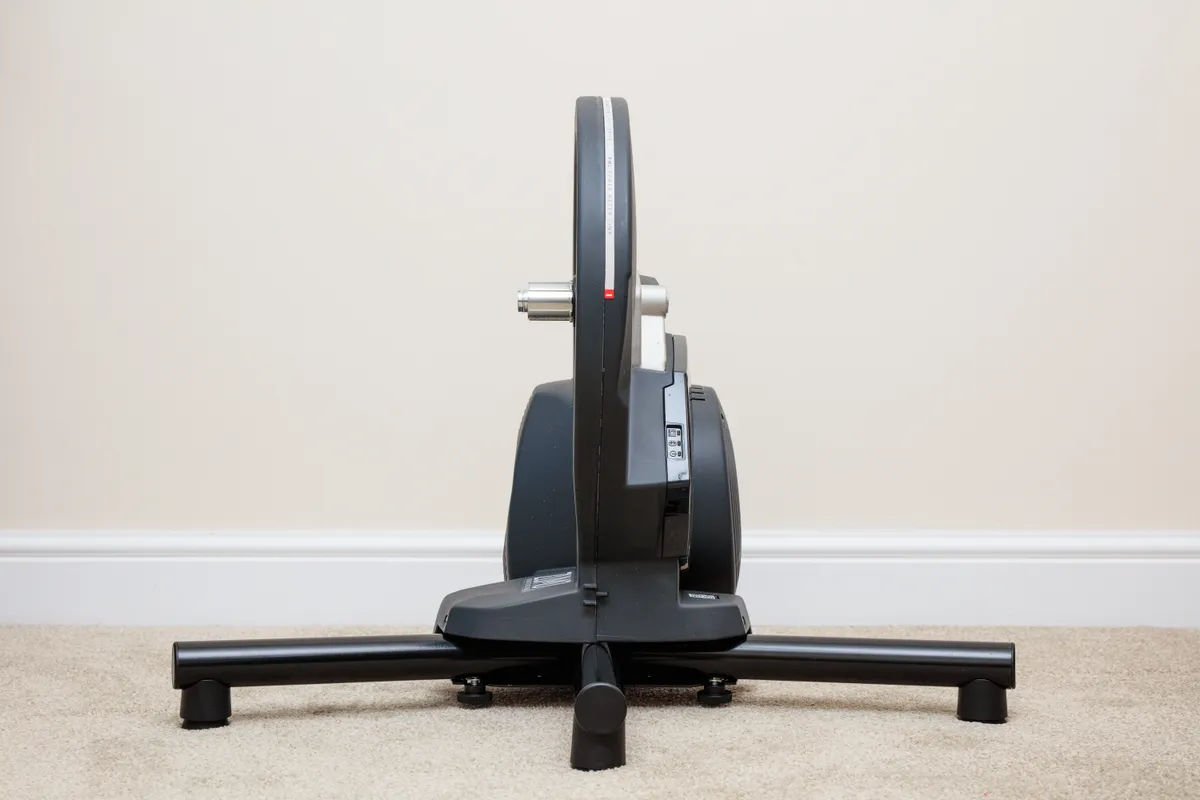
However, whether most people – especially those looking for a smart trainer in this price bracket – need more than this is debatable.
Powerful riders looking to do serious sprint training may find the 1,350-watt power output ceiling limiting, but for everyone else, this is likely to suffice.
Likewise, it’s worth remembering the default in-game trainer difficulty setting on Zwift is set at 50 per cent. This means you only feel half of the on-screen gradient at the trainer (so a 10 per cent gradient in Zwift becomes a 5 per cent gradient at your trainer).
In practice then, you’d need an in-game gradient of at least 24 per cent to max out the Zumo in Zwift (assuming you leave it on the default settings).
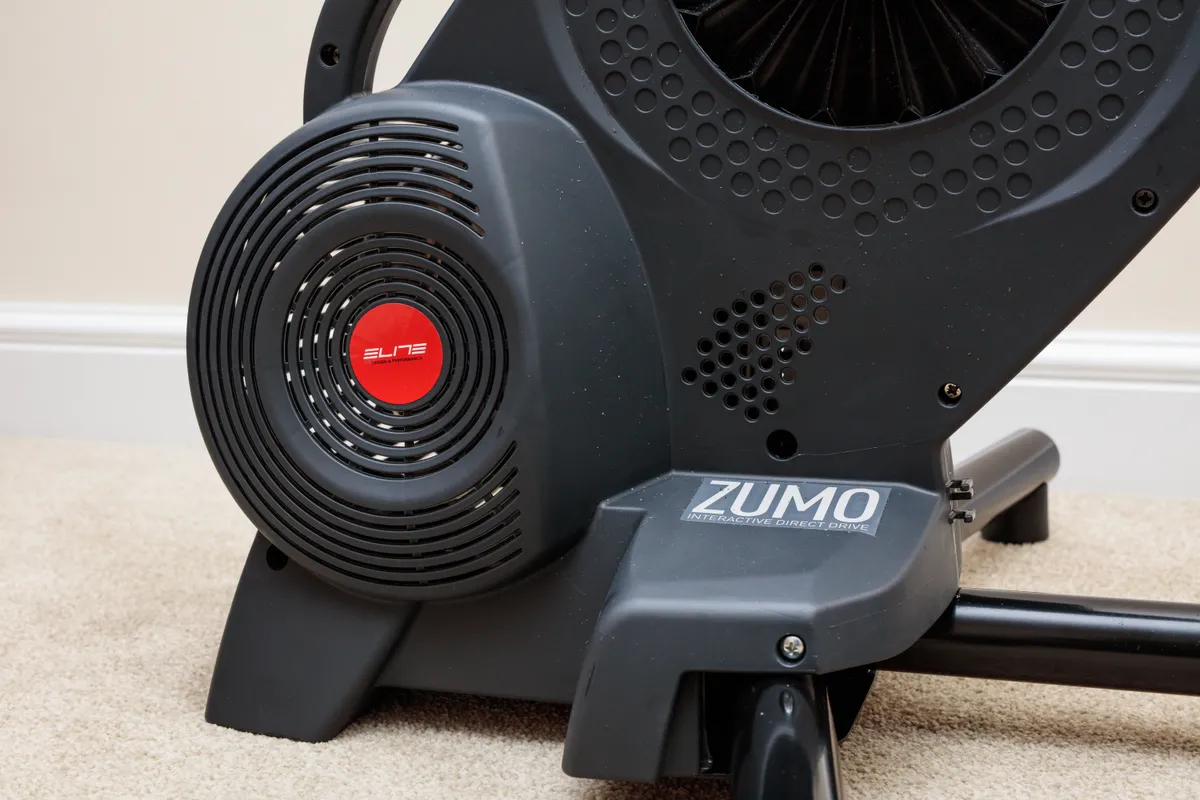
Of course, other indoor cycling apps do exist and they don’t all share this same default 50 per cent trainer difficulty setting. Nevertheless, the Zumo’s 12 per cent maximum gradient simulation will likely only feel limiting if you want to precisely replicate outdoor riding conditions inside.
This is applicable if you’re training for a specific real-world event with very steep roads, for example, but, for most people, I don’t believe it will be an issue.
Noise levels are good too. I found the Zumo averaged 69dB at 200 watts, increasing to around 73dB when sprinting. I also found the tone of the noise less intrusive than with similarly priced wheel-on trainers, like the Saris M2.
Elite Zumo power accuracy
Elite claims the Zumo is accurate to +/- 3 per cent, though in my testing the power numbers consistently averaged on the low side compared to on-bike power meters.
At higher power outputs, the Zumo appeared to under-read power by around 5 per cent, for example.
Considering the error margins of the on-bike power meters and drivetrain losses (a few per cent of your power output is always lost to drivetrain friction – how much depends on how clean your drivetrain is and what chain lube you use), the Zumo is probably just within its +/- 3 per cent spec, but it’s right on the limit.
Unless you have a separate, on-bike power meter (which you can connect to Zwift in place of the trainer’s internal power meter), this isn’t a trainer I’d recommend for serious Zwift racing. The consistently low power numbers would put you at a noticeable disadvantage compared to your competitors.
Everything was fine in terms of consistency, though, so you could use the Zumo to follow a training plan and for general indoor cycling.
Another thing I noticed was that cadence accuracy seemed to deteriorate when the trainer was applying consistently high resistance – riding up Alpe du Zwift, for example.
Under less challenging circumstances (riding along flat or rolling virtual roads), cadence accuracy was generally fine, but this issue did appear during ERG workouts as well.
Fortunately, it didn’t appear to mess with the trainer's ability to hold a steady resistance level in ERG mode, and its responsiveness to big, quick shifts in power was very good as well.
Elite Zumo conclusion
All things considered, Elite has done an impressive job in bringing a direct-drive trainer to market at this price point.
In terms of ride feel and the basic user experience, the Zumo rivals trainers that cost far more and represents a genuine step-up from wheel-on options, especially if you’re into sprinting.
Because the power data averages quite low compared to on-bike power meters and the cadence data isn’t always perfect, it’s hard to recommend the Zumo to serious esports racers.
For more general indoor riding though, and especially those without an unlimited budget, there’s a lot to like here.
How we tested
When testing a smart trainer, we consider its price point, how easy it is to set up and what accessories are (or aren’t) included in the box.
Once a trainer is ready to ride, we put it through a series of tests to assess ride feel, power accuracy and how quickly it responds to virtual gradient changes and ERG mode power shifts.
With ride testing complete, we then compare the trainer’s power data to an on-bike power meter, to check whether or not the trainer gives accurate readings on a consistent basis.
BikeRadar’s expert team has tested all of the most popular smart trainers over the years and you’ll find the top scorers in our best smart trainers list, to help you choose the right one for you and your training or racing needs.
Product
| Brand | Elite |
| Price | £449.00, $699.00 |
| Weight | 13.08kg |
Features
| Mount | direct_drive |
| Folding legs | yes |
| Trainer type | smart_trainer |
| Resistance type | electromagnetic |
| Wheel size | 26in |
| Wheel size | 27_5in_650b |
| Wheel size | 29in_700c |
| Connectivity | antPlus |
| Connectivity | antPlus_fe_c |
| Connectivity | ble |
| Connectivity | bluetooth_smartphone |
| Device compatibility | android |
| Device compatibility | ios |
| Device compatibility | mac |
| Device compatibility | windows |
| Noise | 69.0000 |
| Noise | DECIBEL |
| Max power | 1350.0000 |
| Max power | WATT |
| Flywheel weight | 4.2000 |
| Flywheel weight | KILOGRAM |
| Max grade (degrees) | 12.0000 |
| Hub compatibility | Shimano / SRAM 8,9,10, 11-speed |

